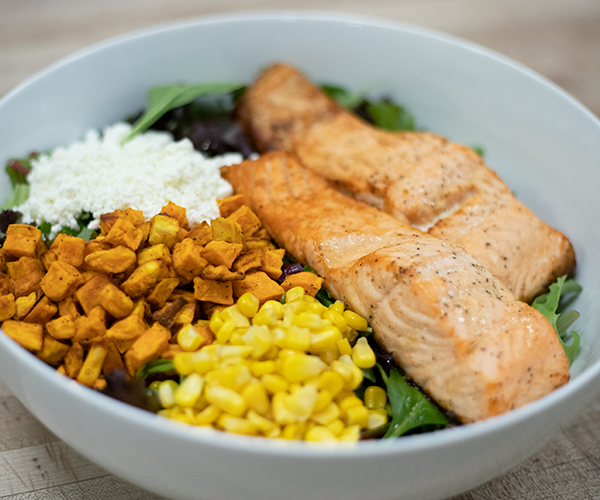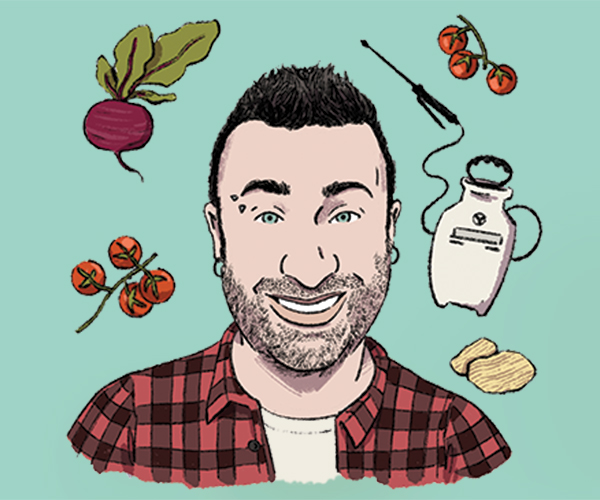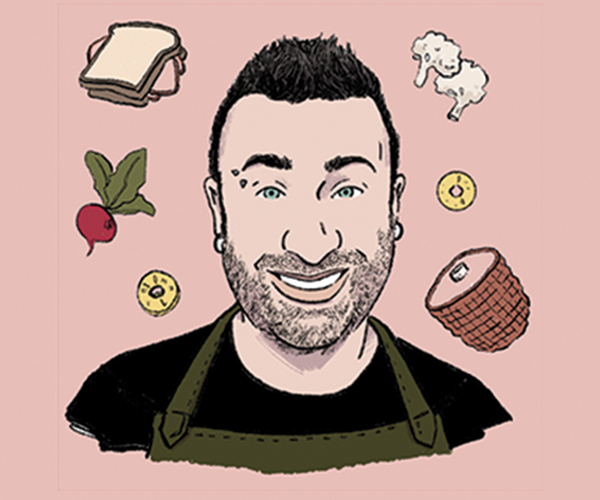Kathy Breychak’s hens lead a life most chickens would envy. The flock of more than 250 roam freely in the barnyard and pasture, pecking to their hearts’ content and soaking up fresh air and sunshine whenever the weather obliges. Sparkles, the bird-herding Australian shepherd, keeps them from wandering off and onto the road. In addition to what they forage for themselves, Kathy feeds them a grain-based chemical- and antibiotic-free diet.
They’ve got cozy little nests in the barn where the layers sit whenever the urge moves them. At night they’re closed inside to keep them safe from predators, more likely to be a neighbor’s dog than a fox.
It’s pretty much a poultry paradise here on Breychak’s Blue Egg Farm, a small family operation just 25 miles west of Cleveland in Columbia Station. It’s a place where the 19th century meets the 21st. Kathy and her husband, Dan, who also raise ducks, geese, turkeys and eating chickens, do things the old-fashioned way. And because they do, the poultry products they sell look and taste much different than what’s available in the grocery store.
The randomly sized eggs have blue, brown, grey and even pink shells. The colors are characteristic of the breeds, heritage varieties that were once common in this country but that have become rare in the age of agribusiness. The yolks are dark yellow, almost orange, the result of their happy, healthy existence, and the whites are less watery than store-bought eggs, making them great for baking. But it’s the flavor that simply knocks your apron off.
Scrambling up a couple is an ah-ha moment. The only way to explain it is that they taste like eggs, only more so, and better.
And you don’t have to take my word for it. You can buy your own or try the Blue Egg Ravioli at Carrie Cerino’s Ristorante.
Each ravioli is filled with chesse, arugula and a Breychak egg yolk, says Joel Hill, who has eaten them and gets almost poetic talking about the experience. “When you cut into each little warm square, the yolk is still slightly runny,” says Hill. “It mixes with the butter and fresh sage he puts on top to make an incredible sauce.”
Hill sighs with happiness at the memory.
Kathy and Dan Beychak’s Blue Egg Farm is more than just a small agriculture business. It’s part of a worldwide movement called Slow Food, that has its local roots in cookbook authors Linda and Fred Griffith, who founded the Cleveland Chapter, and people like Joel Hill and Dominic Cerino. The organization wants to help make it possible for small family farms and local food producers to survive, so that rest of us can enjoy the wonderful “fruits” of their labors. And that, they want everyone to understand, will help preserve the environment, rescue plant and animal species from pending extinction, improve our health, protect what is unique and special about regional ways of making food, and enhance the quality of everyday life.
Though the agenda is ambitious and somewhat daunting, it can be achieved one leisurely meal and one delicious and healthy plateful at a time. That’s why Hill and his wife Jeannie, of South Euclid, joined.
“Living and eating the ‘slow food’ way is the embodiment of everything we think is good and important,” says Joel. “We both work, but we take time to sit down together to relax and enjoy an evening meal. We choose fresh, nutritious foods. It’s not a diet; it’s a lifestyle that makes us partners with the local farmers. It’s a win-win situation for us all.”
Slow Food, a non-profit educational organization, began in Europe in 1986, the brainchild of Italian journalist Carlo Petrini. Reacting to the opening of a McDonald’s in Rome, he set out on a one-man campaign to counter the effects of fast-food culture and industrial farming on culinary and agricultural traditions. From the start, the aim was to increase awareness of the connection between the pleasures of the stove and the table with the rural way of life that has long kept kitchens stocked with good, wholesome things to eat and drink. Now Slow Food International has 83,000 members in 50 countries. Slow Food USA boasts 140 chapters.
Each chapter, called a convivium, is grounded in the friendly, sociable atmosphere that comes when people gather around the dining table and plans its own activities that range from lectures and potluck gatherings to seed swaps and artisan honey tastings.
Last October, 5,000 delegates — representing every link in the food chain from cattle ranchers, cheese makers and vintners to ecologists, educators and culinary innovators — attended the Terre Madre Conference in Turin, Italy. The goal was to energize the entire spectrum of the global food community, and start a continuing conversation about how to produce and promote foods in ways that, in the words of the Terre Madre planners, respect the environment, defend human dignity and protect the health of consumers.
“It was a chance for people from Ohio to meet their peers from all over the world,” says Linda Griffith, “and spend four days talking about common problems, share information and brainstorm solutions.”
In the true spirit of putting your money where your mouth is, conference organizers picked up the tab for housing and feeding all the attendees while they were in Turin.
Cleveland foodies and restaurateurs Liz and Michael Symon, Paul Minnillo, Tim Bando, Rocco Whalen and Karen Small helped raise funds to send the 10 local delegates by offering a cooking class that incorporated products supplied by area farmers.
“Walking though the doors of the Palazzo del Lavoro, into a vast convention center filled with thousands of individuals from 130 countries with the same concerns and interests was a life-affirming, life-changing experience,” says Kari Moore, program director of the Northeast Ohio Foodshed Network and a Terre Madre attendee. “It felt like the United Nations. We were given headsets for the opening ceremonies, which were translated into seven languages. The impact of all this was immensely moving — I had goose bumps on my arms and tears in my eyes. Food had brought us to the ‘table’ and prompted an extraordinary cultural exchange.”
Dean McIlvaine is an organic farmer. He and his wife, Carmella Massaro grow spelt and soybeans, and raise grass-fed cattle on 1,200 acres in West Salem, Ohio. “It was hard to get away during the autumn harvest,” says McIlvaine. “Going was a leap of faith. But I’m glad we did. Among my neighbors, I’m the only one farming sustainably. Everybody else is a hostage to the chemical companies. At Terre Madre, we met so many others who are doing what we do — preserving heirloom varieties and heritage breeds, producing clean food free of manmade pesticides, fertilizers and drugs. It made me realize that we’re part of something much much bigger than I had ever imagined.”
Darwin Kelsey, executive director of the Cuyahoga Valley Countryside Conservancy, was tapped to go to Turin because of his work rehabilitating old farmsteads within the Cuyahoga Valley National Park and creating a farmer’s market in Peninsula. But he didn’t start out with a very high opinion of Slow Food.
“I assumed it was a bunch of elitist foodies out to just have fun, dilettantes spending money most of us don’t have on gourmet dinners and fine wines,” he says.
That’s how Slow Food is often seen by outsiders, and not without reason. Quality doesn’t come cheap. Small-batch artisan products and natural or organic food are labor intensive and typically cost more than their mass-produced counterparts. Restaurants that serve them are likely to cater to well-heeled diners. And encouraging people to eat well does play a part in the organization’s strategy, but there’s more to it.
“I came back from Terre Madre with a very different impression,” continues Kelsey. “Slow Food is taking on the juggernaut of industrial food production. They’re formulating an economic, political and social case for saving traditional foodways, and actively supporting projects around the world that make them viable for the 21st century. It’s still a small movement now but gaining traction and credibility.”
Kelsey says he was especially impressed with how many “little people” attended the conference, “doers” working to make a difference in their own communities. People like Maurice Small and Ed Snavely.
Small is director of the Cleveland Botanical Garden’s Learning Garden and describes himself as an urban farmer. “We need to be equally concerned with green spaces in city landscapes, showing youngsters how to take care of themselves by raising their own food and nurturing what could become a next generation of farmers.”
He’s glad that the 200 members of the Cleveland Convivium are putting education at the center of their efforts. “We are especially concerned with reaching out to kids,” says Linda Griffith. “They are future food shoppers. We want to work with school children and community garden groups.”
Snavely owns 114 acres in Fredricktown, south of Mansfield. His beautifully marbled, pasture-grazed Curly Tail organic pork is always in demand. He ran into his counterpart from North Carolina when he landed at the Milan airport. “He raises heritage-breed hogs just like I do. I met so many folks like me, passionate about what they do and committed to producing food with integrity.”
All three men returned home inspired. Small says he’s ready to “kick up some dust and make feathers fly.” That’s his way of saying he plans to spread the word about living and eating “slow.” “I was doing this long before I knew it had a name or an organization. But now that I do, I’m a lifetime Slow Food member.”
For Kelsey, the focus is on changing how the public thinks about what they eat and where it comes from. “The reality is that our choices matter and each of us has a role to play in re-localizing the food supply. Our own Ohio countryside will disappear if we keep buying fruit and vegetables from California and Mexico when stuff grown here is available.”
According to Kari Moore, program chair for the Cleveland Convivium, plans are in the works for farm and vineyard visits and tasting days at area farmers’ markets “I think that once you bite into something like a vine-ripened heirloom tomato picked just hours before you buy it,” she says, “there’s not much need to explain what we’re doing or why. The experience sells itself.” |!|



